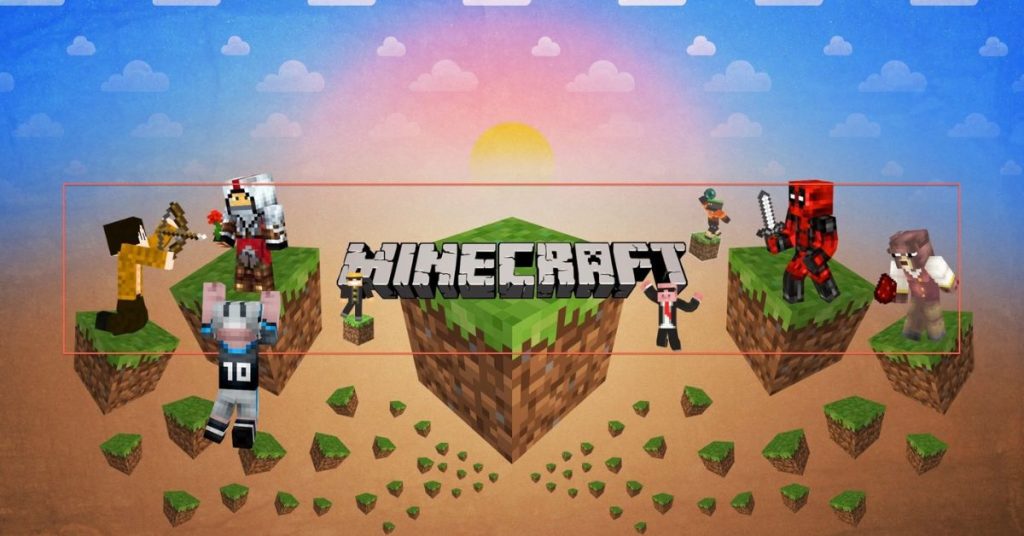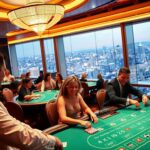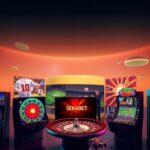Minecraft, a game that has captured the hearts and imaginations of millions worldwide, is not just about building and surviving in a blocky world. It’s a rich tapestry of creativity, community, and visual storytelling. At the heart of this visual narrative are the game’s icons and banners – elements that might seem small at first glance but play a crucial role in shaping the Minecraft experience.
This article delves deep into the world of Minecraft game icons and banners, exploring their design, impact, and the ways they’ve evolved alongside the game itself. In the vast and blocky world of Minecraft, two elements stand out as both functional and deeply expressive: game icons and banners.
These visual components have become integral to the Minecraft experience, serving as more than mere decorations or identifiers. From the pixelated sword in a player’s inventory to the intricately designed banner flying atop a towering castle, these elements tell stories, guide gameplay, and foster creativity.
History of Minecraft (2009)
The Birth of a Blocky Universe
In 2009, Swedish game developer Markus “Notch” Persson released the alpha version of what would become one of the most influential video games of all time. Minecraft started as a simple concept – a sandbox game where players could build and explore in a procedurally generated world made entirely of blocks. The game’s initial release featured basic textures and a limited set of blocks, but it was enough to spark the imagination of early players.
Early Visual Elements
In its infancy, Minecraft’s visual identity was characterized by simplicity. The game’s icons were rudimentary, often just pixelated representations of in-game items. These early icons, while basic, set the foundation for the distinctive visual style that Minecraft would become known for. The game’s logo, featuring the now-iconic cracked stone texture, was one of the first visual elements to capture the essence of the Minecraft world.
Minecraft’s Development Over the Years
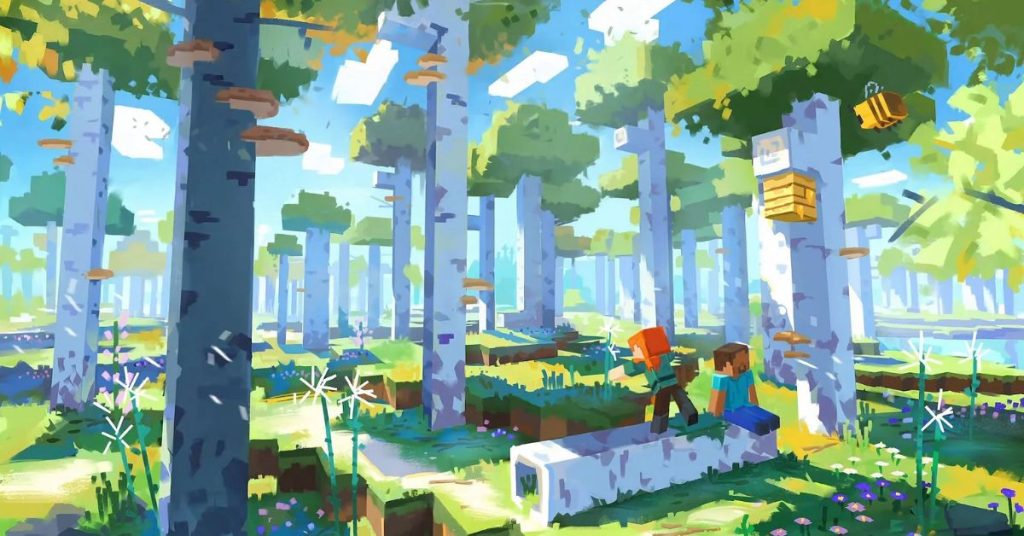
Expanding the Minecraft Universe
As Minecraft grew in popularity, so did its content. With each update, new blocks, items, and creatures were added to the game. This expansion necessitated the creation of new icons to represent these additions. The development team, now under the banner of Mojang Studios (acquired by Microsoft in 2014), faced the challenge of maintaining visual consistency while introducing fresh elements to the game.
Visual Evolution
Over the years, Minecraft’s visual style has undergone subtle but significant changes. While staying true to its blocky roots, the game’s textures and icons have become more refined. The introduction of resource packs allowed players to customize the game’s look, including icons and textures, further expanding the visual possibilities within Minecraft.
Community Contributions
One of the most remarkable aspects of Minecraft’s development has been the role of its community. Modders and texture pack creators have contributed countless custom icons and visual elements, some of which have inspired official additions to the game. This symbiotic relationship between developers and players has been crucial in shaping Minecraft’s visual identity.
Understanding Minecraft Game Icons
The Role of Icons in Gameplay
Minecraft game icons serve multiple critical functions within the game:
- Identification: Icons help players quickly identify items in their inventory, crucial for efficient gameplay.
- Information: Many icons convey information about an item’s properties or uses at a glance.
- Aesthetics: Icons contribute to the overall visual appeal and distinctive style of Minecraft.
- Navigation: In menus and crafting interfaces, icons guide players through the game’s systems.
Design Philosophy
The design of Minecraft icons follows a consistent philosophy:
- Simplicity: Icons are designed to be easily recognizable even at small sizes.
- Pixel Art Style: Staying true to the game’s blocky aesthetic, icons are created using pixel art techniques.
- Color Coding: Different categories of items often share color schemes, aiding in quick identification.
- Thematic Consistency: Icons reflect the nature and origin of the items they represent within the game world.
Evolution of Icon Design
Read Also About : ARK: Survival Evolved (2017) Game Icons and Banners
As Minecraft has evolved, so too have its icons. Early versions of the game featured very basic icons, often just downscaled versions of the in-game textures. Over time, icons have become more detailed and refined, while still maintaining the characteristic Minecraft style. This evolution reflects both technological advancements and a deeper understanding of user interface design in gaming.
Significance of Banners in Minecraft’s Community
Banners as a Form of Expression
Introduced in Minecraft 1.8, banners quickly became a favorite feature among players. These customizable flags serve several purposes:
- Personal Branding: Players use banners to create personal logos or emblems.
- Team Identification: In multiplayer settings, banners help identify different factions or teams.
- Decoration: Banners add a layer of personalization to buildings and landscapes.
- Storytelling: Complex banner designs can convey narratives or represent in-game lore.
Banner Design as an Art Form
The Minecraft community has embraced banner design as a unique art form. Players spend hours crafting intricate designs, pushing the limits of what’s possible with the game’s banner creation system. This has led to the emergence of banner design competitions and galleries where players showcase their creations.
Cultural Impact
Banners have transcended their in-game utility to become a part of Minecraft culture. Popular banner designs are shared across social media platforms, and some have even inspired real-world merchandise. The ability to create and display banners has added a new dimension to how players express themselves within the Minecraft universe.
Community’s Favorites: A Snapshot
Most Popular Icons
While popularity can vary, some Minecraft icons have become particularly beloved by the community:
- Diamond: Representing one of the most valuable resources in the game.
- Creeper Face: The iconic enemy has become a symbol of Minecraft itself.
- Grass Block: Often used to represent Minecraft in broader gaming contexts.
- Enchanted Golden Apple: Prized for its rarity and powerful effects.
- Ender Pearl: Associated with advanced gameplay and transportation.
Favorite Banner Designs
The Minecraft community has created countless banner designs, but some styles and motifs are particularly popular:
- National Flags: Players often recreate real-world flags using banner patterns.
- Fantasy Crests: Elaborately designed banners mimicking medieval heraldry.
- Pixel Art Recreations: Complex designs that push the limits of banner customization.
- Minimalist Logos: Simple yet effective designs that are easily recognizable.
- Character Faces: Representations of Minecraft mobs or popular culture characters.
Minecraft’s Visual Identity in the Digital Age
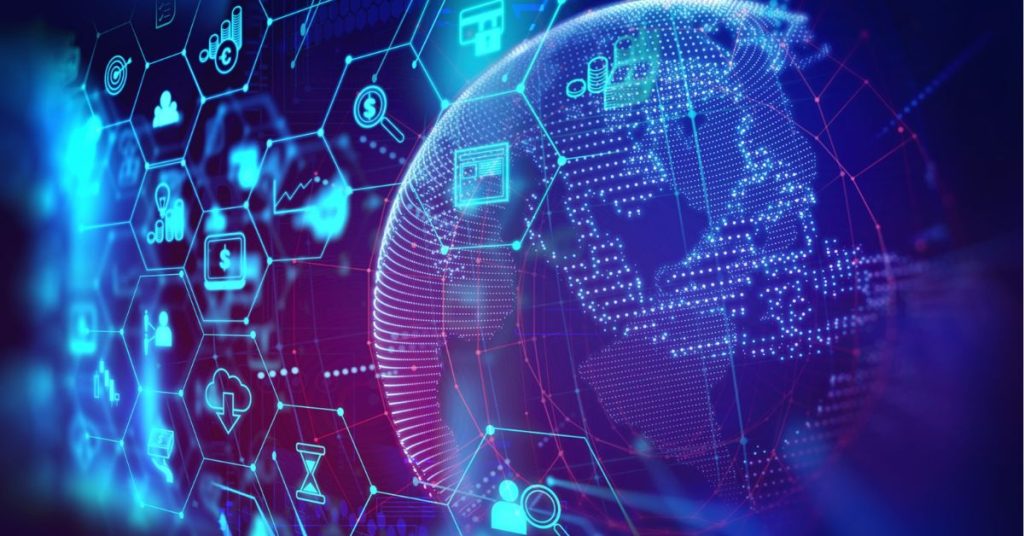
Brand Recognition
Minecraft’s distinctive visual style, including its icons and banners, has played a crucial role in establishing the game’s brand identity. The pixelated, blocky aesthetic is instantly recognizable, even to those who have never played the game. This strong visual identity has been key to Minecraft’s marketing and its expansion into other media, such as books, toys, and clothing.
Cross-Platform Consistency
As Minecraft has expanded to multiple platforms, maintaining visual consistency has been crucial. Icons and UI elements need to be recognizable and functional across various devices, from smartphones to consoles. This challenge has influenced the ongoing refinement of Minecraft’s visual elements.
Influence on Gaming Culture
Minecraft’s success has influenced broader gaming culture, with its visual style inspiring numerous other games. The popularity of pixel art and voxel-based graphics in indie games can be partly attributed to Minecraft’s influence. Additionally, the game’s approach to user-generated content, including custom icons and banners, has set a standard for player creativity in gaming.
Popular Minecraft Game Icons
Essential Tools and Weapons
- Diamond Sword: Represents combat prowess and progression.
- Pickaxe: The quintessential mining tool, available in various materials.
- Bow and Arrow: Iconic ranged weapon with a distinctive curved design.
- Axe: Dual-purpose tool for woodcutting and combat.
- Fishing Rod: Simple design that conveys its purpose clearly.
Crucial Resources
- Coal: Basic fuel source with a simple, recognizable design.
- Iron Ingot: Fundamental crafting material with a metallic sheen.
- Redstone Dust: Distinctive red icon representing Minecraft’s “electricity.”
- Emerald: Bright green gem used for trading with villagers.
- Nether Star: Rare, star-shaped item crucial for advanced crafting.
Memorable Mob Icons
- Creeper Head: The face of Minecraft’s most infamous mob.
- Zombie Head: Represents the basic hostile mob of the game.
- Enderdragon Egg: Symbolic of the game’s ultimate boss battle.
- Villager Face: Iconic big-nosed character central to trading.
- Sheep: Representing the game’s passive mobs and wool production.
How to Get Banners in Minecraft
Crafting Banners
To create a basic banner in Minecraft:
- Gather six pieces of wool of the same color.
- Arrange the wool in the top two rows of a crafting table.
- Place a stick in the bottom middle slot.
- This crafts a basic, single-color banner.
Finding Banners in the World
Banners can also be found in various structures throughout the Minecraft world:
- Pillager Outposts: Often display banners with the Illager emblem.
- Woodland Mansions: May contain decorative banners.
- End Ships: Feature unique purpur-colored banners.
- Villages: Some village structures may have banners as decoration.
Trading for Banners
In some cases, players can acquire banners through trading:
- Wandering Traders occasionally sell banner patterns.
- Some villager professions might offer banner-related items in higher-level trades.
How to Customize Banners in Minecraft
Basic Customization
- Place the banner in a crafting table or loom.
- Add dyes to change the base color or create patterns.
- Use the loom interface to select from various predefined patterns.
- Combine multiple patterns to create complex designs.
Advanced Techniques
- Layering: Add up to six layers of patterns on a single banner.
- Color Mixing: Use different colored dyes to create unique pattern combinations.
- Copying: Use a banner pattern item to copy designs onto blank banners.
- Washing: Use a cauldron filled with water to remove the last applied pattern.
Pattern Items
Certain items can be used to create special patterns:
- Creeper Head: Creates a Creeper face pattern.
- Skull: Produces a skull pattern.
- Flower Charge: Various flowers create different floral patterns.
- Mojang Logo: A special pattern available through specific means.
How to Make Optional Patterns in Minecraft
Creating Banner Patterns
- Craft a Paper: Made from sugar cane in a crafting table.
- Combine Paper with Specific Items: Different items create different patterns.
- Use the Resulting Pattern Item: Apply it in a loom or crafting table with a banner.
Examples of Optional Patterns
- Globe Pattern: Paper + Nautilus Shell
- Snout Pattern: Paper + Piglin Head
- Bordure Indented Pattern: Paper + Vine
- Field Masoned Pattern: Paper + Brick
- Gradient Pattern: Paper + Oxeye Daisy
How Minecraft Game Icons Influence Gameplay
Visual Cues and Learning
- New Player Guidance: Icons help new players understand item functions quickly.
- Inventory Management: Recognizable icons facilitate faster item sorting and use.
- Crafting Assistance: Icons in the crafting interface guide players in creating items.
Psychological Impact
- Reward Systems: Rare item icons create a sense of achievement when obtained.
- Progression Indicators: Evolving tool icons (wood to diamond) visually represent player progress.
- Emotional Attachment: Players often develop favorites, associating positive experiences with certain icons.
Competitive Play
- Quick Decision Making: In fast-paced PvP, recognizable icons allow for split-second choices.
- Strategy Planning: Resource icons help players plan their gameplay strategies more effectively.
- Communication: In team play, icons serve as universal symbols for coordinating actions.
Using Minecraft Banners
Practical Applications
- Marking Territories: Use banners to claim areas in multiplayer servers.
- Navigation: Place distinctive banners as waypoints in large builds or landscapes.
- Decorative Elements: Enhance buildings and interiors with themed banner designs.
- Event Signage: Create banners for in-game events or challenges.
- Storytelling: Use banner designs to represent factions or characters in role-playing scenarios.
Advanced Uses
- Shield Decoration: Apply banner designs to shields for personalized defense items.
- Map Markers: Banners placed in the world appear as markers on maps.
- Redstone Mechanisms: Use banner patterns as visual cues for complex redstone contraptions.
- Trading Identifiers: In multiplayer economies, use banners to brand shops or trading posts.
Community Engagement
- Design Contests: Participate in or host banner design competitions.
- Galleries and Exhibitions: Create in-game museums showcasing banner art.
- Tutorials and Sharing: Teach others how to create complex designs, fostering community knowledge sharing.
Designing Minecraft Banners
Design Principles
- Simplicity: Start with a clear, simple concept that works at a distance.
- Color Theory: Use contrasting colors to make designs pop.
- Symmetry: Utilize Minecraft’s banner system to create balanced designs.
- Layering: Build complexity by thoughtfully layering patterns.
- Theme Consistency: Align banner designs with the overall aesthetic of your build or server.
Tools and Resources
- Minecraft Banner Generator Websites: Online tools for planning designs before crafting in-game.
- Community Forums: Places to share and receive feedback on banner designs.
- Video Tutorials: Step-by-step guides for creating complex patterns.
- Pattern Libraries: Collections of pre-made designs for inspiration or replication.
Creative Challenges
- Pixel Art Recreation: Attempt to recreate famous artworks or logos within the constraints of banner design.
- Storytelling Series: Create a series of banners that tell a story when viewed in sequence.
- Optical Illusions: Design banners that create visual illusions when placed together.
- Seasonal Themes: Develop banner designs that change with in-game or real-world seasons.
Frequently Asked Questions
What is the rarest banner pattern in Minecraft?
The rarest banner pattern in Minecraft is the Mojang logo pattern. This pattern is not obtainable through normal gameplay and is typically only available through special events or commands. It features the distinctive Mojang Studios logo and is highly prized by collectors and decorators in the Minecraft community.
Can Minecraft banners be animated?
While Minecraft banners themselves cannot be animated within the vanilla game, players have found creative ways to simulate animation:
- Using redstone mechanisms to rotate or swap banners quickly.
- Creating a series of slightly different banners and cycling through them using command blocks.
- Utilizing resource packs to change the appearance of banners, though this doesn’t affect the actual in-game item.
True banner animation would require mods or server plugins.
How many layers can a Minecraft banner have?
A Minecraft banner can have up to six layers of patterns. This limitation encourages players to be creative and efficient with their designs. Each layer can be a different color and pattern, allowing for complex and intricate designs despite the layer limit. The base color of the banner counts as the first layer, with up to five additional pattern layers possible.
Are there any cultural references in Minecraft’s icons or banners?
While Minecraft’s icons and banners are largely original designs, there are some cultural references:
- The creeper face has become a cultural icon beyond Minecraft.
- Some banner patterns, like the globe or skull and crossbones, reference real-world symbols.
- Certain items, like the enchanted golden apple (formerly known as the Notch apple), referenced the game’s creator.
- Community-created banner designs often include pop culture references or real-world flags.
Can Minecraft icons and banners be used outside the game legally?
The use of Minecraft icons and banners outside the game is subject to Mojang Studios’ and Microsoft’s intellectual property rights:
- Personal, non-commercial use is generally acceptable.
- Commercial use requires permission from Mojang Studios/Microsoft.
- Fan art and content creation often fall under fair use, but monetization can be a gray area.
- Official merchandise featuring Minecraft icons is available through licensed retailers.
For specific uses, it’s best to consult Mojang’s brand and asset usage guidelines or seek legal advice.
Conclusion
As we’ve explored, Minecraft’s game icons and banners are far more than simple visual elements; they are the building blocks of the game’s unique visual language and a canvas for player creativity. These pixelated designs have evolved from basic representations to powerful tools for expression, storytelling, and community building. Their impact extends beyond the game itself, influencing broader gaming culture and fostering a vibrant ecosystem of user-generated content.
The continued refinement and expansion of these elements demonstrate Mojang’s commitment to balancing simplicity with depth, allowing players to find ever-new ways to express themselves within the game’s blocky confines. As Minecraft continues to grow and evolve, its icons and banners will undoubtedly remain at the heart of its visual identity, continuing to inspire and challenge players to push the boundaries of creativity in this beloved virtual world.

